
Chamois Cream for Cycling
No more sore spots after long bike rides! Chamois cream can provide relief. Here’s how to find the right one and use it well.
It's gotten cold, but you're still eager to bike? Here's what you need to know when choosing the right winter jersey.
Typical winter weather report north of the Alpine foothills: 50 percent chance of showers at a maximum of five degrees Celsius. But should that stop you from biking? No way! You just need the right clothing for your bike ride. Following the good old onion principle, the baselayer is responsible for moisture transport as the first layer - learn more here. The weather jacket as the third and outer layer protects against rain and wind - learn more about rain and wind protection here. But what does the layer beneath need to do to function both as a mid-layer between the jacket and baselayer, and sometimes "solo" over the underwear when you don't need the jacket? We introduce you to the types of midlayers available and how to find the right jersey for you.
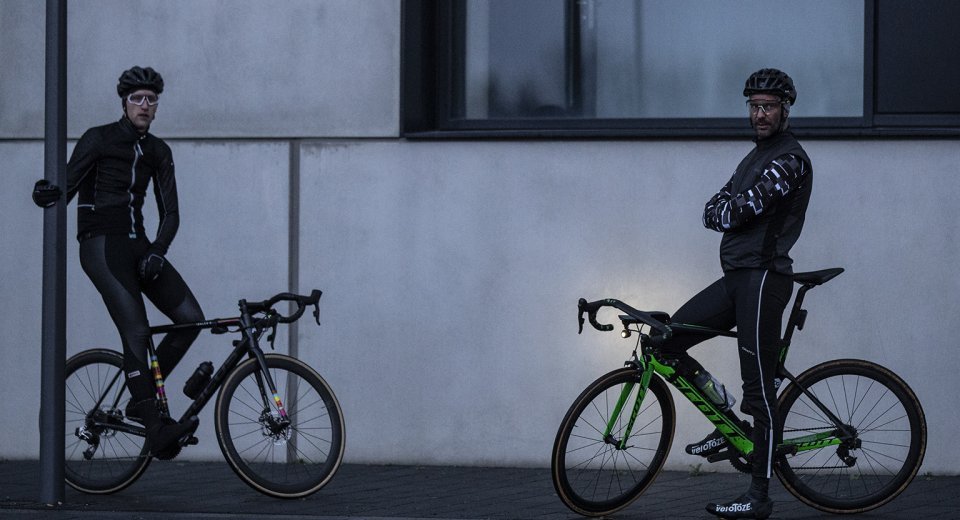
High speed, wind, continuous high intensity: this constant on the one hand and the wind on the other hand are the crucial points for Road bike clothing.
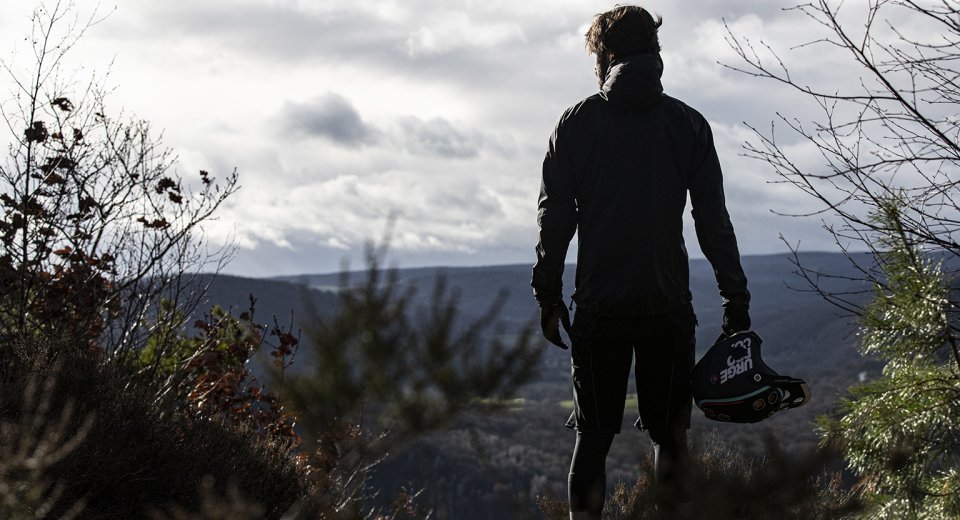
High intensity uphill, a short break at the top, then downhill: the changes present the clothing system with real challenges.
Under stress, your body continuously produces heat, warming up the jersey from the inside. At the same time, the cold ambient air and the driving wind continuously cool down the warmed-up jersey air cushion. Therefore, the midlayer has the complex task of maintaining the right balance between heating from the inside and cooling from the outside.
It becomes really challenging for the jersey when changing its position in the layering system by putting on or taking off a jacket. In other words: When it was just the outer layer over a baselayer shirt and now becomes a midlayer - or vice versa. Sometimes it's exposed to the cold wind, which blows the laboriously warmed air cushion away faster than you can say "freezing point". Sometimes it has to work together with the rain jacket, which complicates the heat and sweat transport.
To meet these very variable requirements, jersey manufacturers work with different concepts and designs. But: There's no perfect jersey for everyone and everything. Sensitivity to cold on one hand and heat management on the other vary greatly from cyclist to cyclist. And the cycling disciplines also have different requirements for the perfect midlayer.
In general, you can choose between unpadded or padded (midlayer) pieces for winter jerseys. Padded textiles can store more air within the padding, which can then be warmed by the body. Thus, the so-called insulation performance is higher in padded jerseys, and they are warmer.
Manufacturers often rely on synthetic fiber fillings for padded textiles. Essentially, the rule is: The thicker the filling, the better the so-called heat retention capacity. But also, the worse the moisture vapor transmission. With intensive exertion over a longer period, this often results in you sweating through your clothes and then cooling off significantly. For this reason, down fillings are not suitable for cycling, as the insulation performance is "too good". Moreover, down attracts moisture and clumps together - then its insulating effect is gone. Unpadded midlayer jerseys usually have a special material structure to keep the desired air cushion close to the body.
As a rule of thumb, the more intense your exertion, the less insulation you need. On a road bike, padded jerseys make sense only if it's really cold. In the city, where the body only warms up just before the destination or when you can expect to be stationary, a midlayer with suitable padding can be useful even at cooler temperatures. Long MTB descents after sweaty climbs require good ventilation on the uphill and wind protection on the downhill. Padding is rather suboptimal here - also because your upper body is active in the descent, producing additional heat.
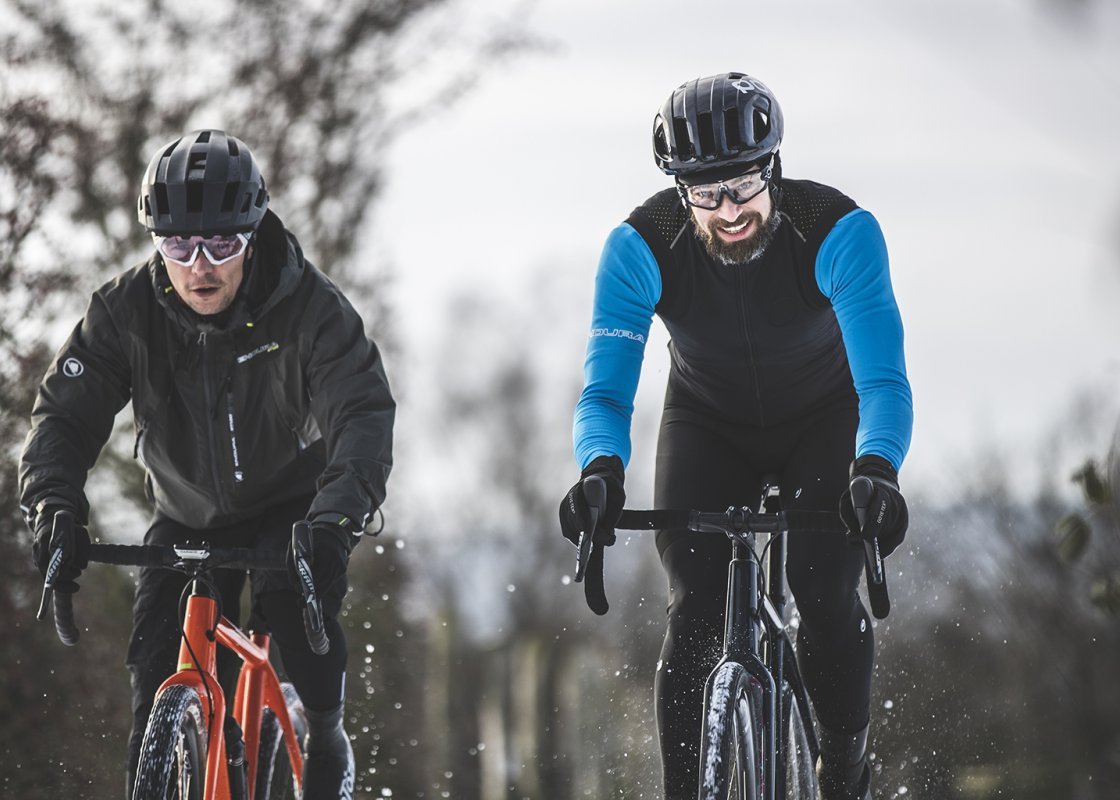
Temperature perception is highly individual, especially when working out. In addition, some people have different backgrounds: MTB left, Road right.
The fibers used in cycling jerseys for cool or cold days can vary greatly depending on the manufacturer. The range extends from relatively widely used "simple" synthetic fabric materials to synthetics with a special structure, like hollow chamber fibers, to natural materials like wool. Or a mix. In addition to the different materials, the jerseys also vary in their construction: They can be woven or knitted. Knitwear can generally bind more air due to its mesh structure. For woven fabrics, a roughened, "brushed" jersey inside can improve insulation. This increases the surface area, binding and warming more air than in fabrics whose inside hasn't been "brushed". Moreover, brushing ensures that the fabric absorbs moisture faster, distributes it evenly, and transfers it better to the outside. In terms of heat performance, there's more or less a tie between the two. Otherwise, knitted jerseys tend to feel softer on the skin and are more elastic, but they are also less robust and less shape-stable than woven jerseys - and so it remains a matter of taste which manufacturing method you decide on.
To optimally fulfill the range of tasks and comfortably regulate temperature, it helps if the different areas of a winter jersey have distinct properties. Thus, numerous manufacturers rely on what's known as body mapping. This involves designing clothing items in a way that protects you from wind chill on the windward side through thicker yarn, partial padding, or windproof sections, meaning protection against cooling due to wind while moving. Conversely, areas shielded from the wind, like the back, under the armpits, or the backside of the upper arms, are spared and made as breathable as possible. By doing so, body mapping supports the body's natural temperature regulation without you having to compromise on wind and/or cold protection. Front zippers, higher or lower collar solutions also play a crucial role. For example, opening a zipper while climbing can quickly and easily improve the climate inside the jersey (or jacket).
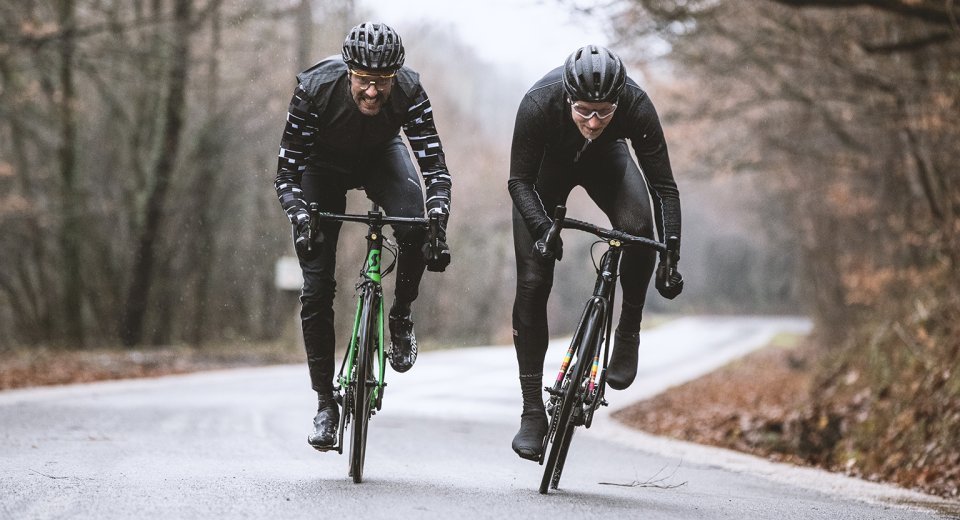
Body mapping follows a simple principle: body parts facing the wind are made windproof.
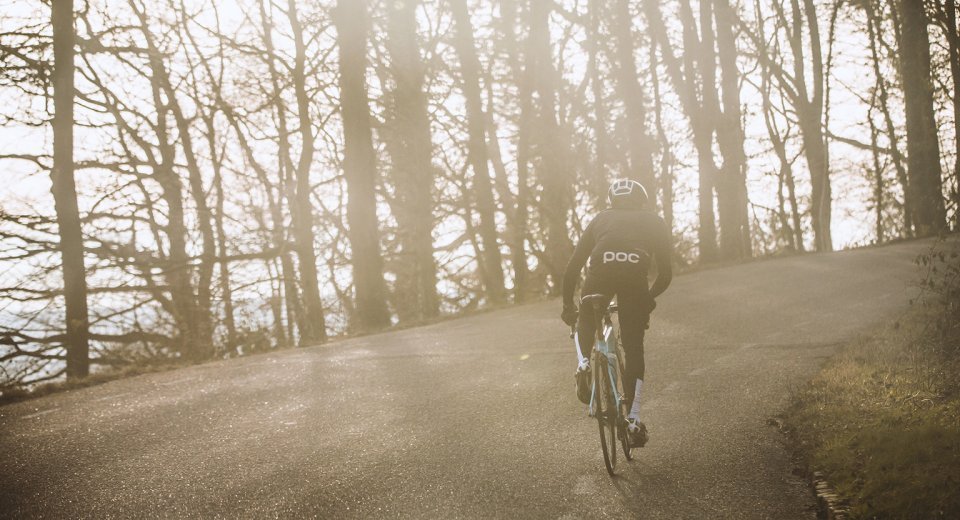
Areas facing away from the wind (and those that generate a lot of heat, e.g. under the arms) are used for ventilation.
For all these theories to work, the right fit of the jersey is crucial. You should consider both the right size and the specifics of your cycling discipline.
You can guided by the following: If the speed, as is often the case on road bikes or gravel bikes, is relatively high and constant, a tighter cut usually works better. Even though there's a significant wind influence, the body continuously emits a lot of heat, and can maintain the relatively small air cushion inside the jersey at a good temperature. With greatly varying speeds, such as the constant shifts between long climbs and subsequent descents on an MTB, a somewhat breezier climate during the uphill is more comfortable – provided you don't neglect wind protection on the downhill. Also pay attention to how the seating position influences the optimal cut of the jersey. On a road bike or gravel bike, a jersey with a slightly longer back works well, so your back doesn't get exposed in the drop bar position. Conversely, a sports road bike jersey with a shorter front might leave your stomach unprotected in a more upright seating position on a mountain bike or touring bike. Both are not conducive to an optimal feel-good climate on the bike.

The closer a (mid-layer) garment fits the body, the smaller the air cushion. If the intensity varies greatly, a slightly wider jersey may even be more comfortable.
Even though individual temperature perception and thus the right choice of clothing vary greatly, there's nonetheless a fairly universal piece of advice: Dress for sports cycling so that you would start to feel slightly cold standing still outside after a few minutes. Warming up quickly takes care of that. Then, nothing stands in the way of riding fun, even in lousy weather during the cold season. Speaking of paths: In winter, bikers often have them all to themselves. That’s one of the great advantages in autumn and winter!